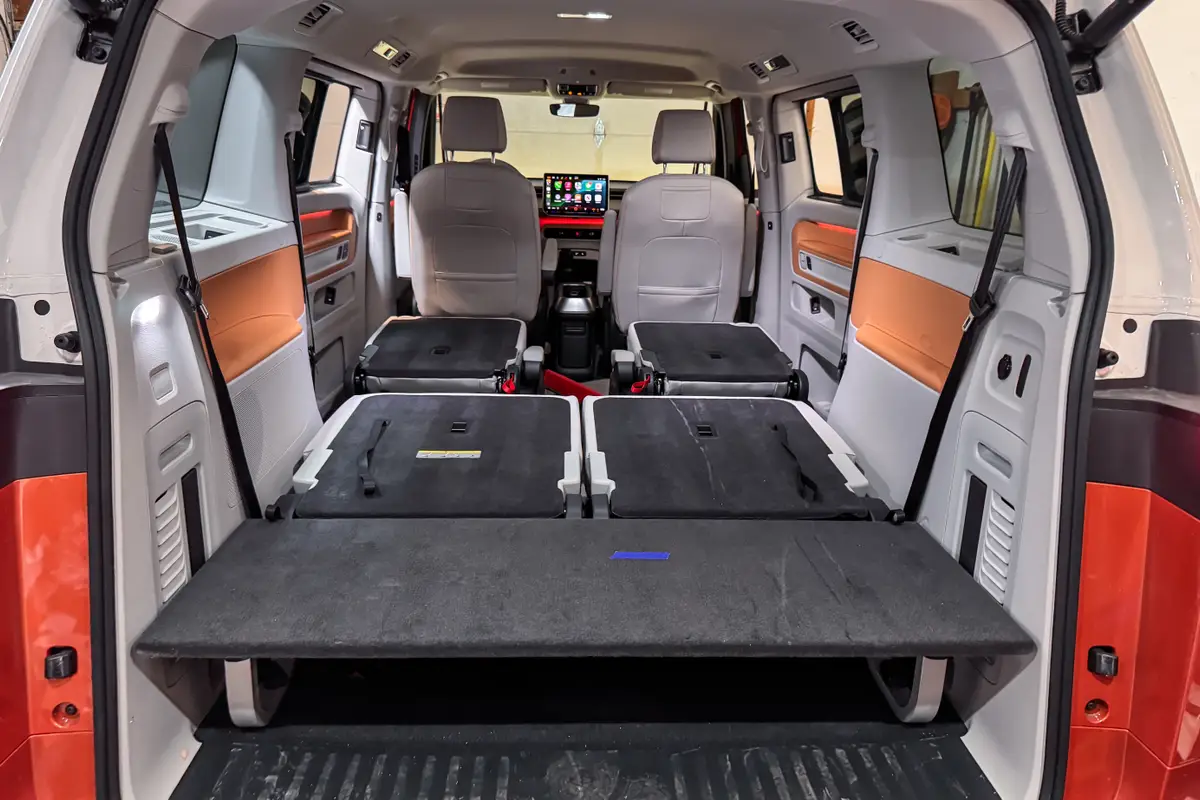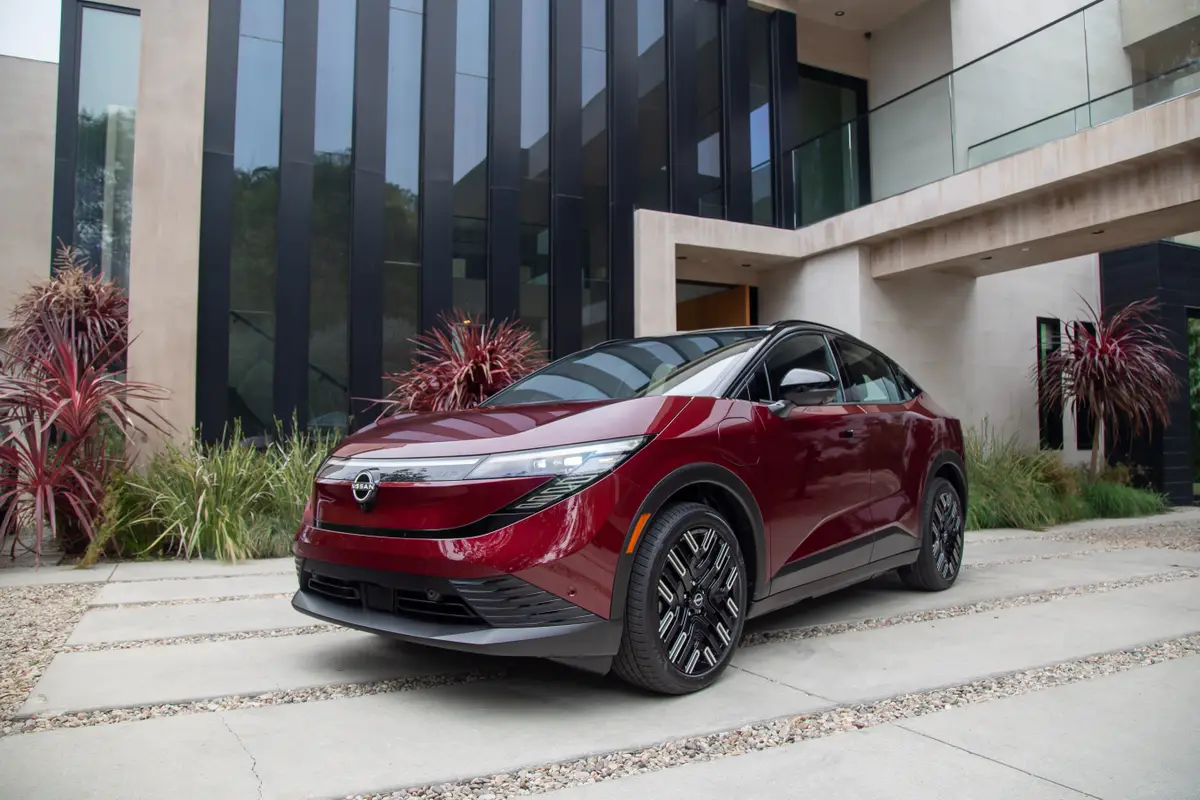Road Test Review: 2011 Ford F-150 FX2 3.5-liter EcoBoost V-6, Part 1
Page: 1 |
Watching Ford torture-test its all-new 3.5-liter EcoBoost V-6 in the lab, on the job and in the Baja 1000, we get it. This six appears to be as tough and capable as an eight, but durability and power are only part of an engine’s story.
What’s it like to live with the EcoBoost? We set out to find the answer during a 2,100-mile trip around the Western U.S.
For our road test, we asked Ford to provide two identical 2011 F-150 EcoBoost trucks that can tow a heavy trailer. Twin Flame Red FX2 SuperCrews were delivered with 3.55 rear axles, two-wheel drive and maximum tow ratings of 9,800 pounds. The trucks were well-broken in, with both having around 7,000 miles on their odometers.
Why duplicate trucks? So we could test performance and fuel economy with an unloaded EcoBoost F-150 and one pulling 9,000 pounds simultaneously in the same driving conditions.
EcoBoost is a gamble for Ford, but with tougher fuel economy regulations just around the corner, it’s the direction other manufacturers are headed, too. The EcoBoost is Ford’s top-of-the-line engine for the F-150. It’s positioned as the high-volume choice above the premium 6.2-liter V-8 even though that engine option costs $1,245 more and is moderately more powerful.
EcoBoost combines gasoline direct injection and twin turbos to shrink engine displacement for improved fuel economy while delivering tons of low-end boost-assisted power. The dual overhead cam 3.5 mill is rated at 365 horsepower and 420 pounds-feet of torque. In high-end configurations with the Max Trailer Tow Package, it can tow up to 11,300 pounds, the same as the single overhead cam 6.2.
The EPA rated its fuel economy at 16/22 mpg city/highway (4×2) and 15/21 mpg (4×4).
Our drive route () covered almost 2,100 miles, from Norco, Calif., just off Interstate 15 east of Los Angeles to Colorado’s Eisenhower Pass on I-70 in the Rocky Mountains – the highest point on the U.S. interstate highway system. In between, we crossed elevations from 200 feet above sea level to 11,000 feet, from the floor of the Mojave Desert to Alpine forests. Driving across terrain this varied, there’s no place for an engine to mask performance gaps. It’s the longest, toughest road test we’ve ever done.
Hitching Up
At first glance, the low-slung FX2 might not seem like the ideal towing platform compared with other F-150 models optioned with four-wheel drive or the Max Trailer Tow Package, which includes a towing-friendly 3.73 rear axle, larger mirrors and revised rear bumper. Our FX2s came equipped with power fold-in heated mirrors and the F-150’s standard trailer tow package, which is optional for models below the FX2 (XL, STX and XLT). The standard towing package includes a Class IV hitch receiver, seven-pin wiring harness, upgraded radiator, auxiliary transmission oil cooler and the new SelectShift six-speed automatic transmission. Each truck was also equipped with an integrated factory trailer brake controller.
Doubts about towing comfort started to ease after we hitched up one of the trucks to a car hauler ballasted to 9,000 pounds. We used our Elite Eaz-Lift weight-distributing hitch’s height-adjustable ball and the trailer’s height-adjustable hitch to ensure the truck sat almost level with about 12 percent tongue weight (about 1,100 pounds) pushing down on its rear.
We measured the gross combined weight of the FX2 plus trailer at 14,500 pounds, or 95 percent of its maximum GCW.
With the trailer properly hitched, we headed out in both trucks.
On the Road
As we’ve previously reported, the EcoBoost F-150 is a firecracker when it’s empty. During the first drive of the truck last year, we clocked a zero-to-60 mph time of just 6.82 seconds behind the wheel of a two-wheel-drive FX2 SuperCrew with a 3.73 rear axle. Our unloaded truck felt at least that quick, as we’d find out later in the drive.
But we were most curious about how the EcoBoost would feel pulling a four-and-a-half ton trailer. In short, confident. The V-6 has a flat, mild exhaust note that doesn’t change much unless you’re at wide open throttle, when it sounds like an angry blender. Contrast this with the aggressive, macho sound we heard when we drove the 5.0-liter V-8 several weeks ago. Still, the EcoBoost had remarkably little difficulty pulling the double-axle white brick behind its bumper up to highway speeds on I-15 and felt every bit as strong as the eight-cylinder engine.
We figured we’d learn two things during the first leg of our trip, from Norco to the Nevada border, about 200 miles. The first was how well the EcoBoost would perform climbing a mountain — in this case, the 12-mile Cajon Pass connecting Los Angeles and the high desert. We’d also start to get a feel for the fuel economy.
The F-150 with the trailer had no problem pulling Cajon, finding its sweet spot in 4th gear in tow/haul mode at about 3,000 rpm and 60 mph to provide power as needed to get around slower traffic. The empty truck held 5th but downshifted to 4th or 3rd for passing.
While some might consider the tall 3.55 rear axle to be a handicap while climbing hills, the F-150’s wide-range six-speed transmission made up for this. Fourth gear is 1.14-to-1, making for a fully multiplied ratio of 4.05-to-1. That’s just a bit taller than the 2008 F-150 with a four-speed transmission and mountain-friendly 4.10 rear axle. Its 1.00 ratio in 3rd gear made for a fully multiplied drive ratio of 4.10-to-1.
As soon as we crested the top of Cajon and the highway flattened out, the F-150 quickly shifted into 6th gear to lug at around 1,800 rpm at 60 mph up to 1,950 rpm at 70 mph.
For much of the way to Las Vegas, both trucks cruised at about 67 mph to 70 mph, fast enough to pass slower semis and not become obstacles ourselves to smaller vehicles zipping by. The trailer felt stable at those speeds, too.
About 150 miles into this leg, we learned the hard way about the differences in fuel economy between the trucks.
Towing Efficiency ()
The 2011 F-150 adds a new 4.2-inch high-resolution productivity screen in the center of the instrument cluster. It provides info about a wide variety of truck features, including transmission temperature, selected gear, pitch and yaw angles, trailer information and more. We were drawn to the fuel economy data, which is now much easier to access compared with the 2010 F-150’s trip computer.
Nearing Baker, Calif., the empty truck was averaging about 18.5 mpg, according to the truck – good enough to cover a respectable 480 miles of range with its 26-gallon tank. But that tank would be a weak point for the truck towing the trailer.
Baker was 50 miles from our planned refueling stop in Primm, Nev., on the border with California. The truck with the trailer was below a half-tank of fuel, but its trip computer estimated another 80 miles of range. However, we were averaging only about 7.2 mpg, according to the productivity screen. With two more hills to climb between Baker and Primm, we ran into a critical fuel situation that required us to stop just five miles from the exit to tap the extra two-gallon canister of gasoline we kept on hand for such a situation.
Because we paid more attention to the range estimate than the gas gauge and average fuel economy, we pushed the EcoBoost F-150 to its efficiency limit with the trailer – in this case, 190 miles from full to empty.
As the F-150 climbed the last hill, range ticked away in decrements of up to 5 miles at a time. That’s because the truck calculates its distance-to-empty algorithm based on past driving history, according to Ford. In our situation, the algorithm averaged in the low fuel economy with the previous history of high fuel economy from when the truck had been unloaded. The distance-to-empty algorithm isn’t a crystal ball; it had no way of knowing that we’d be driving with such a heavy trailer. That’s why the distance-to-empty range started dropping faster and faster. The extreme change in fuel economy pushed the algorithm to the edges. The range shown was still catching up and decreasing sharply when we went below a quarter-tank of fuel.
Given several tanks of fuel while towing, the truck’s distance-to-empty algorithm can adapt to the new, lower fuel economy figures – and it eventually did during our drive.
We weren’t aware of it, but the F-150 has a built-in solution to this situation that the driver can use when towing a trailer occasionally instead of regularly. Using the thumb controls on the steering wheel, the driver can access the settings menu in the cluster and select "Towing" instead of “Normal.” This tells the truck that the driver is going to drive under the situations tested. It effectively shortens the driving history and allows the distance-to-empty shown to be accurate within the top three-quarters of the tank. This setting can be chosen once, and always left as "Towing." Under normal driving conditions, the driver won’t notice any changes between "Towing" and "Normal” because if the gas mileage history is 20 mpg and the truck is currently getting 20 mpg, the length of history does not matter.
Of course, we also wondered why we averaged only 7.2 mpg towing in the EcoBoost truck. We quickly figured out – as you can see in our detailed fuel economy chart – that the mountain climbs, windy conditions and consistent cruising speeds above 65 mph robbed us of the efficiency we were expecting from the EcoBoost engine. The turbos were often spooled up in tow/haul mode when the truck was holding a lower gear for power. We suspect that as the turbo temperatures rose for extended periods, the engine may have overfueled and burned rich to cool down combustion and exhaust gas temperatures. This could explain the soot we saw coating the inside of the tailpipe.
Slowing down was the easiest way to boost fuel economy. With either truck, we didn’t attempt to get close to the 80 mph highway speed limit posted along Utah’s empty stretches. Depending on terrain and speed, we eventually could push the towing fuel economy into the 8 mpg to 9 mpg range. Not great and below what we expected, but we were also steadily climbing into the Rocky Mountains.
Page: 1 |

Featured stories




